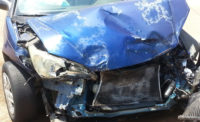The National Transportation Safety Board (NTSB) yesterday released the results of its safety study on reducing speeding-related passenger vehicle crashes on the nation’s roads.
"Intelligent" speed systems
In the study, the NTSB recommends completion of all actions in the DOT 2014 Speed Management Program Plan, assessment of the effectiveness of point-to-point speed enforcement in the U.S., incentivizing passenger vehicle manufacturers and consumers to adopt intelligent speed adaptation systems, and increasing the adoption of speeding-related Model Minimum Uniform Crash Criteria Guideline data elements and improving consistency in law enforcement reporting of speeding-related crashes.
The NTSB found the relationship between speed and crash involvement is complex and is affected by a number of factors, however, speed – and therefore speeding – increases crash risk both in terms of the likelihood of being involved in a crash and in terms of the severity of injuries sustained by those involved in speeding-related crashes.
Just as deadly as impaired driving
The study links speeding to 112,580 passenger vehicle highway crash fatalities between 2005-2014. To put that number in perspective, nearly the same number of people – 112,948 – died in alcohol-involved crashes in the same period.
Despite this sobering statistic, speeding has few negative social consequences compared to the consequences of an arrest or conviction for driving under the influence. The study further notes that although drivers are aware that speeding is a threat to safety, they also acknowledge it is a common driving behavior in the US.
“You can’t tackle our rising epidemic of roadway deaths without tackling speeding,” said NTSB Acting Chairman Robert L. Sumwalt, “and you can’t tackle speeding without the most current research. Speed kills. This study examines how it kills and what actions can be taken to save lives and prevent speeding-related crashes.”
Speeding on the job
The NTSB previously identified speeding as a safety issue among drivers of heavy vehicles in work zones and at locations with site specific hazards. However, the NTSB has not often addressed the safety issue among passenger vehicle drivers. This study highlights the scope of speeding-related passenger vehicle crashes, illustrates the risks of speeding and describes driver attitudes toward speeding, both by themselves and by other drivers.
Using a combination of quantitative and qualitive methods to summarize the risks of speeding, the NTSB focused on proven and emerging countermeasures that can be broadly applied to address the speeding problem but are currently underused or ineffectively used.
Based on the findings of the study the NTSB issued 19 safety recommendations: one to the US Department of Transportation, eight to the National Highway Traffic Safety Administration, four to the Federal Highway Administration, and one each to the Governors Highway Safety Association, the International Association of Chiefs of Police, and the National Sheriffs’ Association.
The NTSB also recommended action from seven states that prohibit automated speed enforcement, 28 states without automated speed enforcement laws, and 15 states with automated speed enforcement restrictions. The recommendations to the states—to remove barriers to the use of automated speed enforcement—are based on the findings that it is an effective but underused countermeasure.
A synopsis of the NTSB safety study “Reducing Speeding-Related Crashes Involving Passenger Vehicles”, including the findings and a complete list of the safety recommendations is available at: https://go.usa.gov/xR5mm
The full report will be available on the NTSB website in a few weeks.


